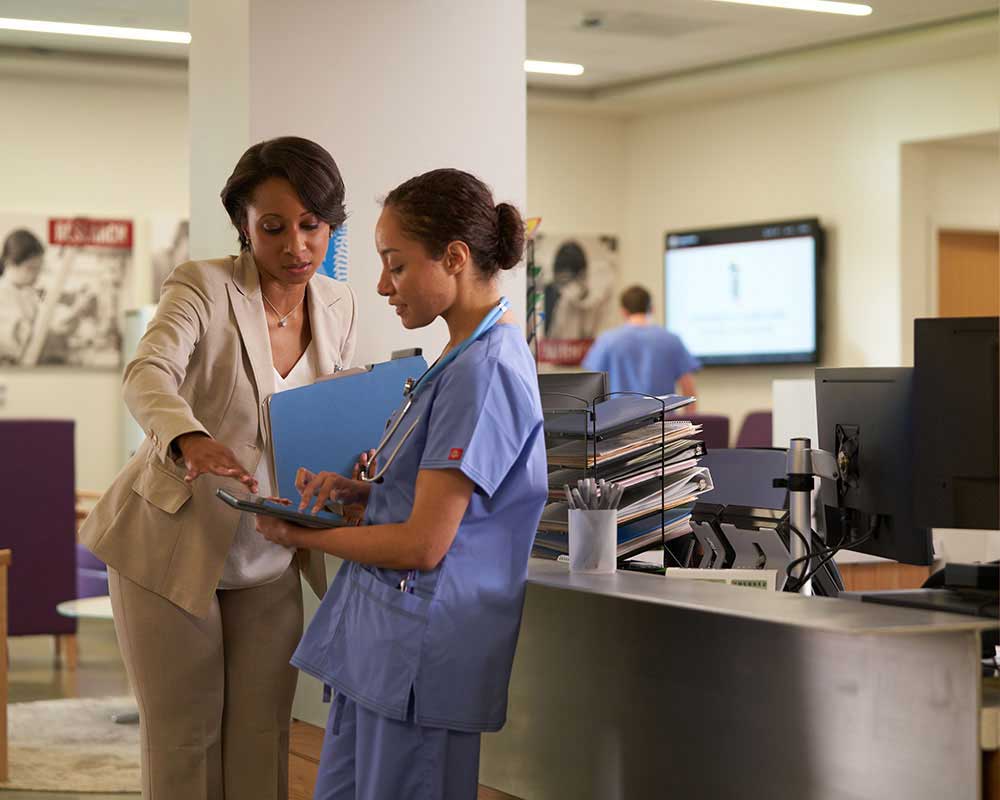Best Practices in Medical Management for Improving Efficiency and Decreasing Expenses
In the ever-evolving landscape of healthcare, the search of ideal techniques in medical management is extremely important for boosting effectiveness and curbing expenditures. By integrating innovative modern technologies such as electronic wellness records and telemedicine, doctor can streamline operations and boost person care. However, modern technology alone is not a cure all; maximizing source allocation and fostering collaborative interaction among treatment teams are similarly important (medical administration). As organizations strive to stabilize top quality and expense, what techniques should be prioritized to attain these twin objectives? The answers to these inquiries hold the key to a much more sustainable healthcare system.
Leveraging Advanced Technology
The assimilation of digital services right into health care systems has actually changed the means centers operate, streamlining procedures and enhancing patient treatment. By centralizing patient details, EHRs get rid of the need for troublesome documents and help with seamless interaction among healthcare carriers.
Telemedicine is another technical advancement that has actually reinvented individual communication. It provides benefit for both people and medical care professionals by making it possible for remote examinations, which can reduce the need for in-person sees and enhance appointment organizing. Additionally, telehealth systems can prolong healthcare access to rural or underserved locations, bridging voids in care delivery.
Furthermore, using Artificial Knowledge (AI) and maker knowing is becoming increasingly widespread in predictive analytics, enabling for very early discovery of possible health problems and more informed decision-making. These modern technologies, when integrated effectively, can enhance diagnostic accuracy and individualize patient treatment plans, ultimately leading to boosted medical care outcomes and operational effectiveness.
Optimizing Resource Allotment
By strategically managing sources such as employees, equipment, and funds, medical care centers can dramatically enhance their functional performance, boost patient outcomes, and minimize unneeded expenses. The initial step in optimizing resource appropriation includes carrying out a thorough analysis of current properties and identifying areas where resources might be underutilized or overextended.
Focusing on resource appropriation based upon person demands and service needs is necessary. This entails aligning sources with high-demand locations, such as emergency situation treatment or specialized therapies, to ensure timely and efficient person treatment. Implementing versatile staffing designs can likewise enhance labor resources by adjusting employees allocation in reaction to fluctuating individual quantities. Furthermore, embracing telemedicine and other technical options can ease physical resource restraints by supplying alternate opportunities for patient-provider interactions.
Monetary resources must be carefully monitored and assigned with strategic insight to sustain both short-term operational requirements and lasting institutional goals. This includes investing in training programs that boost team proficiencies and adopting energy-efficient practices that decrease operational expenses (medical administration). Eventually, an enhanced source allotment technique fosters a lasting medical care atmosphere that is receptive, reliable, and monetarily prudent
Streamlining Workflow Processes
When healthcare centers aim to boost operational effectiveness, simplifying operations procedures ends up being an essential focus. Reliable workflows reduce redundancy, remove unneeded steps, and improve coordination amongst healthcare professionals. This technique not just increases solution delivery but additionally improves the top quality of client care.

Following, innovation integration plays a significant role in improving operations. Carrying out digital wellness records (EHRs) and digital doctor order entry (CPOE) systems decreases paperwork, reduces human error, and makes sure information comes to all pertinent employees. Additionally, leveraging telemedicine systems can simplify individual appointments and follow-ups, minimizing the stress on physical infrastructure.

Inevitably, streamlined process cause cost decreases read review and improved person fulfillment, cultivating an extra lasting medical care setting.
Enhancing Information Management
Building upon streamlined process, optimizing information administration comes to be a crucial part ahead of time health care administration. Reliable data management systems are critical for maintaining exact person records, boosting decision-making, and making sure conformity with governing requirements. By executing robust data administration options, health care facilities can improve the top quality of client care while simultaneously decreasing functional costs.
One key element of enhancing data monitoring is the assimilation of sophisticated Homepage digital wellness document (EHR) systems. These systems assist in the smooth exchange of individual details across various departments, reducing replication of examinations and reducing mistakes. A properly designed EHR system sustains data analytics, making it possible for doctor to identify patterns and make informed decisions concerning person treatment.
In addition, safeguarding client data is critical. Embracing detailed cybersecurity procedures, including file encryption and routine audits, makes certain the stability and confidentiality of delicate info. This not only safeguards people but likewise keeps the establishment's reputation.
Buying staff training is an additional important variable. Enlightening health care experts on information monitoring methods improves their capacity to properly utilize modern technology, resulting in boosted client results. To conclude, enhancing information administration via advanced innovation and comprehensive training is vital for accomplishing effectiveness and expense reduction in clinical management.
Fostering Collaborative Interaction
A vital element in progressing medical management is fostering joint communication amongst medical care experts. Efficient interaction is critical for making certain smooth patient care, enhancing treatment results, and reducing mistakes. By urging open discussion and control throughout multidisciplinary groups, health care companies can enhance their operational efficiency and minimize unnecessary costs.
Central to this technique is the combination of communication innovations such as digital wellness records (EHRs) and safe and secure messaging platforms, which assist in the rapid exchange of important individual info. These tools allow doctor to access and share data in real time, guaranteeing that all group members are notified and straightened in their decision-making procedures. Regular team conferences and interdisciplinary rounds can better advertise a society of partnership and responsibility.
Educating programs focused on improving interaction abilities are likewise crucial. These programs can aid staff establish the capability to convey information plainly and pay attention proactively, therefore decreasing misunderstandings and cultivating a helpful job atmosphere. In enhancement, adopting standard communication procedures, such as SBAR (Scenario, History, Analysis, Suggestion), can enhance the exchange of details, ensuring that essential information are communicated succinctly and successfully. Inevitably, promoting joint interaction causes boosted medical care delivery and cost savings (medical administration).

Conclusion
Integrating innovative technology, such as electronic health and wellness records and telemedicine, along with optimized source allotment and streamlined process procedures, is crucial for enhancing effectiveness in clinical management. Reliable data management and fostering collaborative interaction amongst healthcare teams are vital for More about the author lessening redundancies and improving treatment high quality. By prioritizing preventive care and engaging in quality renovation initiatives, healthcare organizations can achieve substantial cost savings and boosted patient results, thus making certain lasting health care shipment in a progressively complicated atmosphere.